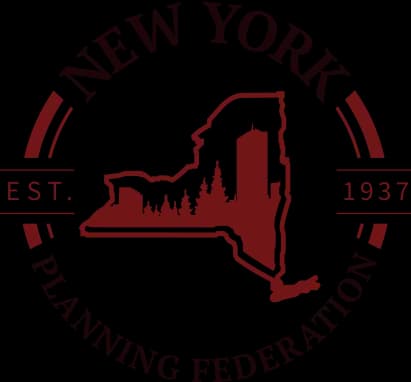Articles on Federal Funding Cuts
The New York Housing Conference (NYHC)
The article gives an analysis of the President’s proposed FY 2026 HUD budget cuts, warning they would severely destabilize New York’s housing ecosystem. The proposed reduction nearly 46%, slashing funding from $8.7 billion to about $4.8 billion poses a dire threat to more than one million New Yorkers who rely on HUD-supported programs such as Section 8 vouchers, multifamily subsidized housing, supportive services, and community development grants.
NYHC highlights the potential ripple effect across the housing economic chain. Without these funds, multifamily loan commitments amounting to $50 billion could collapse, as lenders and developers depend on long-term HUD-backed rental assistance to guarantee project viability. The cuts risk not only halting new developments but also destabilizing existing housing stock.
Lenders and housing agencies are already sounding the alarm. Projects in the pipeline are being delayed or canceled as financing structures crumble under uncertainty. HUD cuts are triggering increased caution, tighter underwriting, and project suspensions. NYHC stresses that, without intervention, the state could face a deepening affordable housing shortfall, extensive evictions, and increased homelessness.
In sum, NYHC’s analysis portrays the FY 2026 budget not as a financial adjustment, but as a potential catalyst for housing market collapse jeopardizing tenant security, developer confidence, and the entire affordable housing pipeline across New York. The analysis, featured in the Wall Street Journal, emphasizes the urgent need for federal restraint or state-level responses to avoid a housing emergency.
https://thenyhc.org/2025/07/22/new-nyhc-analysis-hud-funding-cuts-july2025/
Community Service Society
The CSSNY article delivers a stark warning: the sweeping federal budget cuts encapsulated in what's called the “Big Beautiful Bill” threaten to unleash a housing disaster across New York. An alarming $50 billion in multifamily loans funded in part by HUD and supported by Fannie Mae and Freddie Mac now hang in the balance. The ripple effect could send shockwaves through financing systems, imperiling both existing and future affordable housing developments. CSSNY highlights that New York City’s Housing Preservation and Development (HPD) stands particularly exposed: 58% of its $1.2 billion budget funding vital services like housing inspections, vouchers, and construction could evaporate. The stakes are highest for NYCHA, which currently depends on federal support for nearly 70% of its operating budget.
With limited state-level aid $255 million allocated for capital improvements and $75 million for public housing authorities beyond NYC the gap is far from bridged. While federal leaders tout housing-friendly tax credit reforms and broader economic benefits, CSSNY makes it clear: these new units target households earning 80–120% of AMI, a reality out of reach for many New Yorkers at or below 50% AMI who rely on Section 8 vouchers. Developers underscore that without HUD rental assistance, operating costs and financing simply don’t add up. In neighborhoods like Harlem, Brownsville, and Mott Haven, where nearly 40% of residents depend on Section 8, the possible ramifications are personal, widespread, and deeply urgent highlighting that this isn’t just policy talk, it’s about whether families keep a roof over their heads.
https://www.cssny.org/news/entry/big-beautiful-bill-means-ugly-cuts-and-dire-ny-housing-crisis
New York City Comptroller
In a critical August 2025 analysis, NYC Comptroller Brad Lander warns that the city’s FY 2026 Adopted Budget leaves the city highly vulnerable amid worsening federal funding threats and economic uncertainty. Despite recent actions in Washington like steep cuts to HUD programs, Medicaid clawbacks, and tariff shocks, the budget fails to bolster the city's safety nets. The rainy-day fund remains stagnant, and the general reserve went unboosted, sidelining two key fiscal buffers Lander had strongly advocated for.
Under conservative forecasting, the Comptroller projects a $4.2 billion budget gap in FY 2026, which could swell to nearly $10 billion by FY 2028, even without a recession. A downturn could deepen these gaps further. While some meaningful investments made their way into the budget such as legal services for immigrants and childcare enhancements, Lander argues that they fall far short of offsetting threats from proposed HUD cuts, which jeopardize Housing Choice Vouchers, public housing, and essential services.
With large spending needs looming and discretionary funding imperiled, the Comptroller stresses that without stronger reserve-building, rigorous budgeting, and federal aid restoration, the city could face service disruptions and growing financial strain.
https://comptroller.nyc.gov/reports/comments-on-new-york-citys-fiscal-year-2026-adopted-budget/
Stateline
The Stateline article warns that President Trump’s proposed FY 2026 “skinny budget” would slash funding for the Department of Housing and Urban Development (HUD) by 44%, including a 43% reduction in rental aid programs that help support over 9 million Americans, a staggering rollback that threatens housing stability across the nation. The plan would bundle traditional programs like Housing Choice Vouchers (Section 8) and public housing into a single block grant, pushing state governments to design and oversee new assistance systems at a time when many lack the infrastructure or will to properly manage such a massive shift.
Under the proposal, able-bodied adults without disabilities or senior status would face a hard two-year cap on rental assistance, an arbitrary cut-off point that experts say could precipitate mass evictions and deepen homelessness. Department of Housing and Urban Development Secretary Scott Turner framed the block grant overhaul to empower states to distribute dollars “thoughtfully and precisely,” but advocates warn it would eliminate crucial federal guardrails and consistency.
At the local level, housing activists are already sounding the alarm. States would struggle to fill the gap, especially for vulnerable populations relying on predictable, regulated rental aid. The fear is clear: with both money and oversight receding, state agencies would be overwhelmed and renters could be left scrambling for security as the emergency becomes a daily crisis.
https://stateline.org/2025/06/16/housing-advocates-worry-states-cant-fill-rental-aid-gaps-if-trump-cuts-go-through/
Florida Policy Institute
The article talks about how Florida’s FY 2025–26 budget marks a troubling retreat on affordable housing and essential support programs, even as everyday residents face mounting economic pressures. Lawmakers allocated $487.4 million for affordable housing, a striking $85 million decrease from the prior year, divided between three key areas:
(1) housing construction and rehabilitation
(2) temporary and supportive housing including Housing First initiatives
(3) general housing assistance.
The Florida Housing Finance Corporation’s vital tools, the SAIL (State Apartment Incentive Loan) and SHIP (Statewide Housing Initiative Partnership) programs, funded through the documentary stamp tax saw a combined $134.2 million reduction, lowering support for housing rehabilitation across communities struggling to recover from climate threats. Moreover, Governor vetoes canceled nearly $2.5 million worth of projects that would have delivered 233 affordable units for seniors and low-income homeowners in counties like Pinellas, Pasco, Hernando, and Miami.
Although the budget temporarily restores a one-time $150 million infusion into the William E. Sadowski Affordable Housing Trust Fund which was backdated to FY 2024–25, lawmakers eliminated the legislative requirement for ongoing annual contributions, putting future affordable housing investment on tenuous ground. In other areas, Permanent Supportive Housing, Transitional Housing, and Rapid Re-Housing saw funding cut nearly in half, down to $45.7 million, while Housing First received a modest boost to $5.3 million, slightly up from $1.9 million last year.
Collectively, the budget signals a shift away from sustained investment in housing security risking the well-being of low-income seniors, families, and other vulnerable populations. The cuts, particularly amid looming climate risks and housing instability, contrast sharply with the gains seen in other sectors, painting a stark picture of priorities misaligned with growing community needs.
https://www.floridapolicy.org/posts/florida-fy-2025-26-budget-summary-general-government
Cal Matters
The article talks about how California is preparing for a possible game-changing surge in affordable housing construction, thanks to stealth provisions tucked into President Trump’s sweeping spending package. While the bill slashes Medicaid, food assistance, and funding for clean energy, it also permanently increases Low-Income Housing Tax Credits (LIHTC). In practical terms, the 9% LIHTC supply will rise by 12% annually, and the burden on developers to tie 4% credits to bond financing has been halved, dramatically easing access. Experts applaud this as a rare silver lining: “It’s a very big deal,” said Matt Schwartz, CEO of the California Housing Partnership, reflecting hope among housing proponents.
The real-world impact could be profound. The accounting firm Novogradac estimates these enhancements might fund 1.22 million additional affordable units nationwide over the next decade, translating to roughly 20,000 extra units per year in California though high construction and tariffs costs may temper this to around 10,000 annually. Importantly, the California Tax Credit Allocation Committee has already updated its application guidelines to mirror these changes, allowing projects waiting in the queue to qualify sooner and more equitably.
However, significant hurdles remain. Skyrocketing construction costs, volatile tariffs, and limited local funding linger as barriers. Replenishing pandemic-era state dollars has stalled, and a Bay Area housing bond was recently dropped from the ballot due to political resistance. Even the expanded credits can't fully offset these systemic challenges. Still, the tax credit expansion offers a rare lifeline in an otherwise bleak budget, presenting a concrete tool for California to accelerate much-needed housing development if stakeholders can pull it effectively.
https://calmatters.org/housing/2025/08/affordable-housing-trump-ca/
Texas Public Radio
The article highlights how San Antonio officials are raising alarms over proposed federal cuts that could seriously endanger their affordable housing efforts. Since 2021, the city has leveraged around $44 million from two essential programs, HUD’s Community Development Block Grant (CDBG) and HOME Investment Partnerships Program (HOME) to support over 2,200 affordable housing units. City staff describe these federal funds not as the main revenue but as critical gap financing, the missing layer in a complex construction budget that makes high-quality, amenity-rich housing viable. Without this support, developments like Los Arcos at VIDA would be much harder to realize.
Local developers warn that if CDBG and HOME funds disappear, many projects will collapse under their own financing structures. The executive director of the Texas Affiliation of Affordable Housing Providers explained that these dollars are what enable developers to thread affordability into multi-layered capital stacks. Smaller builders feel it even more keenly. Habitat for Humanity San Antonio relies on $4–6 million annually from these programs for foundational infrastructure such as roads, sewer and land prep and their absence would be catastrophic. Similarly, Merced Housing Texas used just $3.5 million in CDBG funds to complete over 150 health and safety home repairs, showing how far the funding reaches.
In light of this uncertainty, local leaderships are exploring solutions. The city’s first-ever housing bond, passed in 2021 and now almost fully allocated, may be extended through a new bond referendum this November. Still, officials emphasize that even with local aid, the depth and scale of need, given rising housing insecurity, would definitely mean that federal funding isn’t optional but foundational.
https://www.tpr.org/government-politics/2025-08-12/proposed-federal-cuts-could-have-a-dramatic-impact-on-affordable-housing-in-san-antonio

